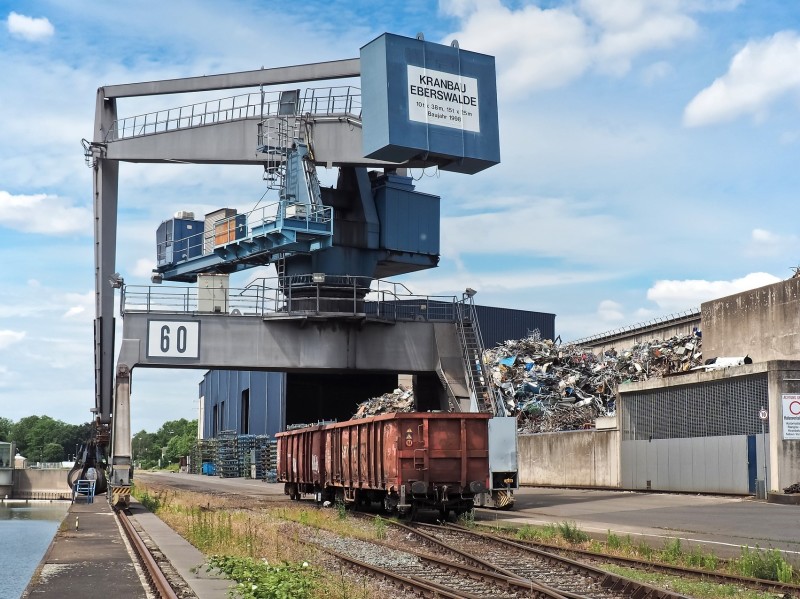EMMOSS model
06.01 / 07.24 / 09.44 / 09.45 / 13.17 / 19036 / 19063 / 21092
From 2006 to 2023
TML developed and updated the EMMOSS model to calculate emissions from rail, barge, and maritime traffic in Flanders and to simulate scenarios for future emission regulations. The model was refined several times, with a specific focus on the maritime module, including detailed emission calculations for the port of Antwerp and other Flemish ports.
The emissions model Flanders - EMMOSS - was developed on behalf of the VMM and aims to determine emissions from rail, inland navigation, and maritime navigation for passenger and freight transport on Flemish territory. For maritime shipping, this concerns both emissions caused by ships sailing on Belgian jurisdiction and emissions from ships in ports (manoeuvring and idling). For Flanders (with important ports such as Antwerp, Ghent, and Zeebrugge), maritime emissions in ports form a non-negligible part. The model is used to annually inventory emissions and simulate scenarios, taking into account technological evolutions within the different modes of transport.
Scenarios of future emissions regulation in international shipping
Using the EMMOSS model developed for the VMM, TML did some simulations to determine the effect of new regulations for shipping on NOx and SO2 emissions. These simulations frame a larger study conducted by Resource Analyses and CE Delft.
Update and refinement (EMMOSS v2)
In 2009 - 2010, the model was updated and refined. The input data and assumptions for the different transport sectors (maritime, inland navigation, and rail) were updated. The emission factors were also reviewed. The result of this update and refinement was delivered as EMMOSS v2.
Belgian emission model for maritime shipping, inland navigation, and railways
This study for LNE calculated emissions for the same modes of transport at Belgian level, starting from EMMOSS. This short study started from transport demand data for Belgium but maintained the assumptions made for EMMOSS Flanders. In this way, a simplified estimate is given of emissions from rail, inland navigation, and maritime transport in Belgium.
Maritime shipping module refinement (EMMOSS v3)
In 2013 - 2014, the model was updated again. The focus lay on the maritime module. We studied how to refine the methodology for dredging and tugboats, sea fishing, and sand extraction. The result of this extension was delivered as EMMOSS v3.
Further detailing marine module with focus on the port of Antwerp (EMMOSS v4)
In the period 2019 - 2020, we conducted a thorough adaptation of the shipping module, adapting the calculation tool to henceforth do an annual detailed calculation for the port of Antwerp based on the movements of individual ships. The methodology for emission calculations for docked ships was also adapted and all emission factors were reviewed.
Further detailing of maritime module (EMMOSS v5)
In the period 2022 - 2024, we will continue the thorough update of the marine module.
We will mainly work on further detailing the calculations for the other ports, analogous to the earlier development for the port of Antwerp in EMMOSS v4. The methodology for dredgers and tugs will also be reviewed.
The emissions model Flanders - EMMOSS - was developed on behalf of the VMM and aims to determine emissions from rail, inland navigation, and maritime navigation for passenger and freight transport on Flemish territory. For maritime shipping, this concerns both emissions caused by ships sailing on Belgian jurisdiction and emissions from ships in ports (manoeuvring and idling). For Flanders (with important ports such as Antwerp, Ghent, and Zeebrugge), maritime emissions in ports form a non-negligible part. The model is used to annually inventory emissions and simulate scenarios, taking into account technological evolutions within the different modes of transport.
Scenarios of future emissions regulation in international shipping
Using the EMMOSS model developed for the VMM, TML did some simulations to determine the effect of new regulations for shipping on NOx and SO2 emissions. These simulations frame a larger study conducted by Resource Analyses and CE Delft.
Update and refinement (EMMOSS v2)
In 2009 - 2010, the model was updated and refined. The input data and assumptions for the different transport sectors (maritime, inland navigation, and rail) were updated. The emission factors were also reviewed. The result of this update and refinement was delivered as EMMOSS v2.
Belgian emission model for maritime shipping, inland navigation, and railways
This study for LNE calculated emissions for the same modes of transport at Belgian level, starting from EMMOSS. This short study started from transport demand data for Belgium but maintained the assumptions made for EMMOSS Flanders. In this way, a simplified estimate is given of emissions from rail, inland navigation, and maritime transport in Belgium.
Maritime shipping module refinement (EMMOSS v3)
In 2013 - 2014, the model was updated again. The focus lay on the maritime module. We studied how to refine the methodology for dredging and tugboats, sea fishing, and sand extraction. The result of this extension was delivered as EMMOSS v3.
Further detailing marine module with focus on the port of Antwerp (EMMOSS v4)
In the period 2019 - 2020, we conducted a thorough adaptation of the shipping module, adapting the calculation tool to henceforth do an annual detailed calculation for the port of Antwerp based on the movements of individual ships. The methodology for emission calculations for docked ships was also adapted and all emission factors were reviewed.
Further detailing of maritime module (EMMOSS v5)
In the period 2022 - 2024, we will continue the thorough update of the marine module.
We will mainly work on further detailing the calculations for the other ports, analogous to the earlier development for the port of Antwerp in EMMOSS v4. The methodology for dredgers and tugs will also be reviewed.


